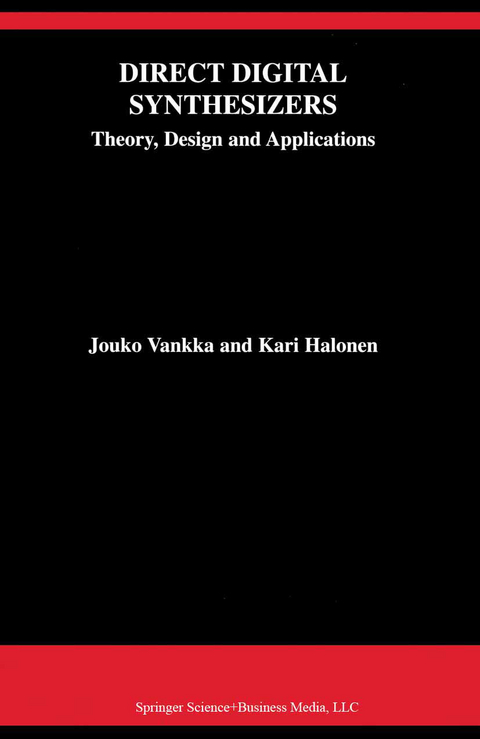
Direct Digital Synthesizers
Springer (Verlag)
978-0-7923-7366-7 (ISBN)
It is easy to include different modulation capabilities in the DDS by using digital signal processing (DSP) methods, because the signal is in digital form. By programming the DDS, adaptive channel bandwidths, modulation formats, frequency hopping and data rates are easily achieved. The flexibility of the DDS makes it ideal for signal generator for software radio. The digital circuits used to implement signal-processing functions do not suffer the effects of thermal drift, aging and component variations associated with their analog counterparts. The implementation of digital functional blocks makes it possible to achieve a high degree of system integration. Recent advances in IC fabrication technology, particularly CMOS, coupled with advanced DSP algorithms and architectures are providing possible single-chip DDS solutions to complex communication and signal processing subsystems as modulators, demodulators, local oscillators, programmable clock generators, and chirp generators. The DDS addresses a variety of applications, including cable modems, measurement equipments, arbitrary waveform generators, cellular base stations and wireless local loop base stations.
Direct Digital Synthesizers was written to find possible applications for radio communication systems. It will have appeal for wireless and wireline communication engineers, teachers and students.
1. Introduction.- 2. Direct Digital Synthesizer.- 3. Indirect Digital Synthesizer.- 4. CORDIC Algorithm.- 5. Sources of Noise and Spurs in DDS.- 6. Blocks of Direct Digital Synthesizer.- 7. Spur Reduction Techniques in Sine Output Direct Digital Synthesizer.- 8. Up-Conversion.- 9. Direct Digital Synthesizer with an On-Chip D/A-Converter.- 10. CMOS Quadrature IF Frequency Synthesizer/Modulator.- 11. Multi-Carrier QAM Modulator.- 12. Single Carrier QAM Modulator.- 13. Multi-Carrier GMSK Modulator.- 14. Conclusions.- References.- Appendix A: Fourier Transform of DDS Output.- Appendix B: Derivation Output Current of Bipolar Current Switch with Base Current Compensation.- Appendix C: Digital Phase Pre-distortion of Quadrature Modulator Phase Errors.- Appendix D: Different Recently Reported DDS ICs.
| Erscheint lt. Verlag | 31.5.2001 |
|---|---|
| Reihe/Serie | The Springer International Series in Engineering and Computer Science ; 614 |
| Zusatzinfo | XXI, 193 p. |
| Verlagsort | Dordrecht |
| Sprache | englisch |
| Maße | 155 x 235 mm |
| Themenwelt | Naturwissenschaften ► Physik / Astronomie ► Mechanik |
| Technik ► Elektrotechnik / Energietechnik | |
| ISBN-10 | 0-7923-7366-9 / 0792373669 |
| ISBN-13 | 978-0-7923-7366-7 / 9780792373667 |
| Zustand | Neuware |
| Haben Sie eine Frage zum Produkt? |
aus dem Bereich


